The Paladin in Dungeons and Dragons was first introduced in the Greyhawk supplement in 1975. Up until 4th edition the Paladin was a holy knight. The Paladin was a devout warrior. He or she was devoted to good. They did good deeds. They could not lie or cheat. They were required to give up most of their worldly goods and money. And they could not act dishonorably in any way.
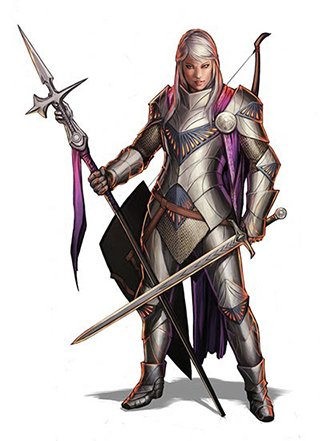
Paladins in Dungeons and Dragons 1st Edition
In 1st Edition Advanced Dungeons and Dragons the Paladin was one of the most difficult classes to qualify for. Very high prerequisite scores were required. But it was also one of the most restrictive classes to play. One was required to be human. A paladin was required to be lawful good in alignment. They had to give away just about all of their magic items and treasure to charity or to the church.
But they were also potentially one of the most powerful classes to play.
- They could use any armor or weapons
- They used 10 sided dice for hit points
- They could rise to (potentially) unlimited level
- They had no requirement to fight others in their class for advancement (such as monks and druids)
- They had the ability to lay hands and cure injuries
- They had the ability to cure disease and were immune from disease themselves
- All of their saving throws received a bonus of +2
- They could detect evil at 60′
- They had a constant protection from evil around them in a 1″ radius
- At high levels they obtained clerical spells
- They got their own warhorse at 5th level
- They could turn undead like a cleric (but not quite as well)
- With a holy sword they had even more powers. They could use their circle of power generated by having such a sword to dispel magic

As you can see this is a pretty impressive class to run in 1st edition. But it was too hard for most to qualify for.
Many players had difficulty staying within their alignment while playing a paladin. The paladin is a goody goody type of character. What most of the player characters would want to do the paladin could not condone or even go along with. Their alignment and faith defined them. And many a dungeon master has imposed penalties to a paladin character that did not follow their alignment. Such penalties might include losing spell casting and other paladin specific abilities until such time as the paladin atones for his or her transgressions.
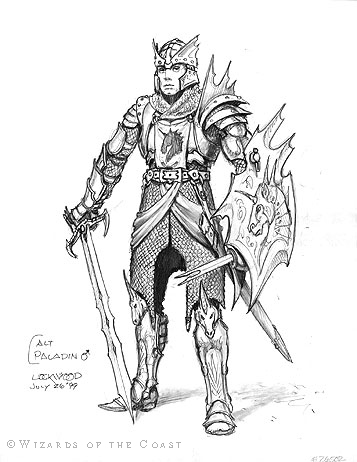
A paladin in interesting armor
Paladins in Dungeons and Dragons 2nd Edition
Second edition still had high qualification requirements. It also required that the paladin be human. The Complete Paladin’s Handbook was later published which developed the paladin class even further.
This book goes into much more detail about the abilities of the paladin. For example, early on, it establishes clearly what the paladin’s detect evil ability can actually detect. It goes into great detail about alignment and the duties and responsibilities of the paladin. And it clearly defines many of the other abilities and restrictions of this class.
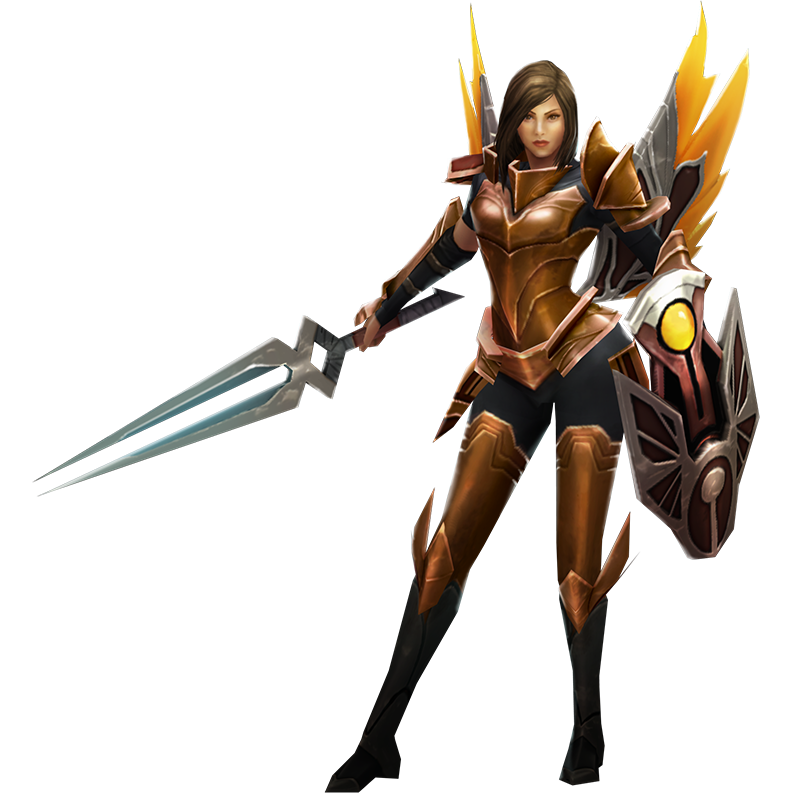
Paladins in Dungeons and Dragons 3rd Edition
Third edition made it much easier to become a paladin. There were no specific ability score requirements. But obviously high scores would help one to be successful.
Many of the same abilities existed for 3rd edition:
- Summon a warhorse
- Immunity to disease
- Turning undead
- Casting clerical spells
- Detecting evil
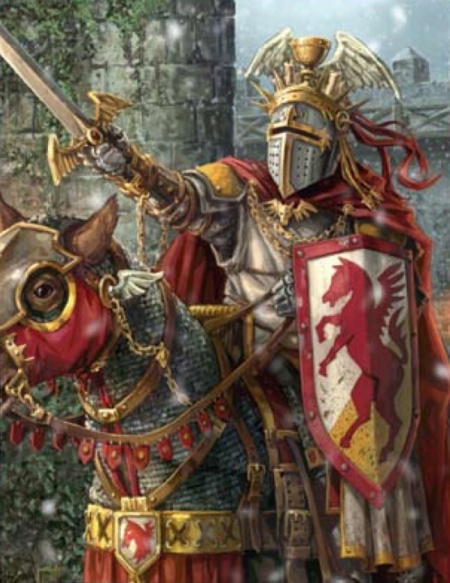
Many of the same requirements also existed:
- Had to be lawful good
- Had to allow enemies to surrender
- Could not commit evil acts
- Could not sneak up and attack someone from behind except under extreme circumstances
- Could not associate with evil characters
Unlike prior editions, however, third edition allowed any race to play a paladin.
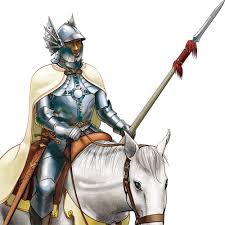
Paladins in Dungeons and Dragons 4th Edition
Fourth edition made the first drastic change to the Paladin. One no longer had to be a holy warrior. Instead a paladin could be the champion of some deity. Any deity. Of any alignment. No longer could the paladin lose his powers for failing to follow the strictures of their alignment. They also no longer had the innate immunity to disease or the innate ability to cure it.
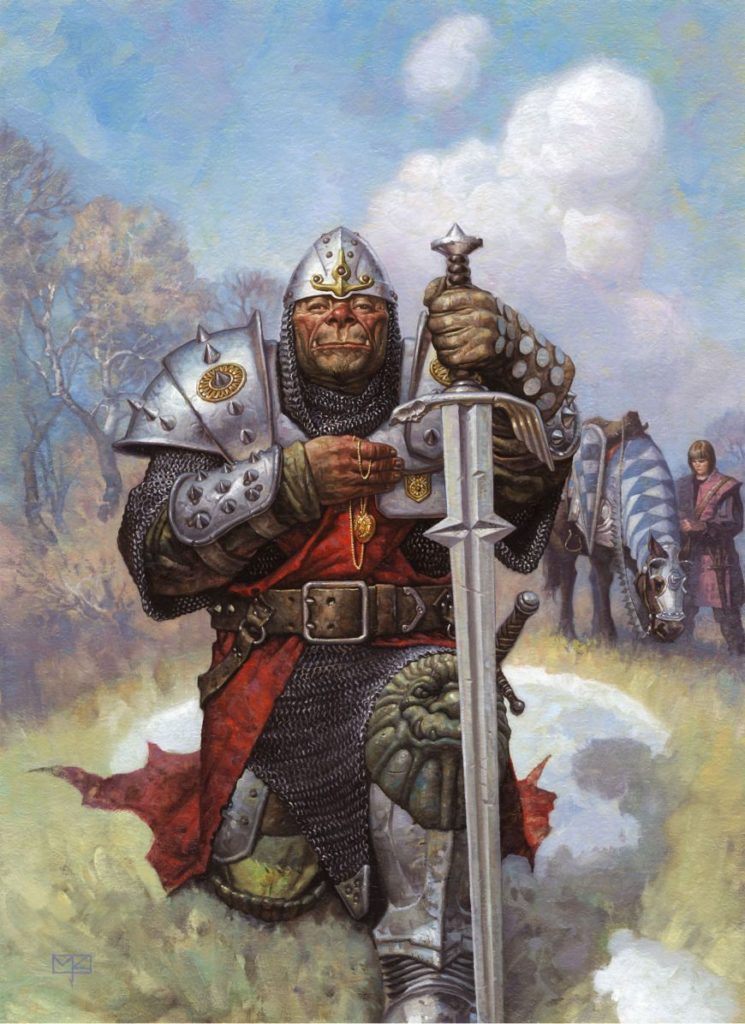
Paladins in Dungeons and Dragons 5th Edition
Fifth edition continued the ability of paladins to be of any race or alignment. Although…….evil paladins are rare. The paladin chooses between sacred oaths which define their development and future abilities.
The Oath of Devotion is the 5th edition variation of the Cavalier. This form of paladin is dedicated to justic, virtue and order. The paladin is a knight in shining armor. Honor is paramount to this sort of paladin.
The Oath of the Ancients is more of a nature knight. The paladin is concerned more than just with the fight between good and evil. Darkness itself is the enemy of this paladin. This paladin loves nature itself and many of the abilities are more druidic than clerical.

The Oath of Vengeance is a solemn vow to punish those who have committed a terrible act. These paladins are sometimes called dark knights or avengers. This sort of paladin is most likely to be evil in alignment in 5th edition. They are more concerned with delivering justice than they are in being devout and holy themselves.
They are still a very powerful class choice for the player. They can wear heavy armor. They still gain the ability to heal others and smite the wicked and the undead. They have the ability to sense celestials, fiends or undead within 60 feet. They still have the ability to lay hands to heal. And they still acquire the ability to cast spells.
A Paladin in Hell
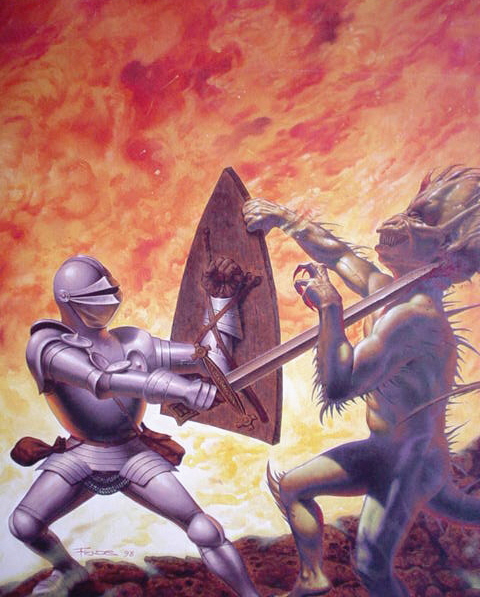
One of the most classic images in Dungeons and Dragons is the picture on page 23 of the 1st edition players handbook. In this image a paladin is alone on a plane in hell fighting against devils. He is engaged in fighting a single horned devil as an ice devil, two more horned devils and a bone devil are approaching. Clearly this paladin is on a mission to destroy as many devils as he can before they take him down. The paladin is adorned in full plate mail and his aura of good can be seen around him as he does battle against his enemies.
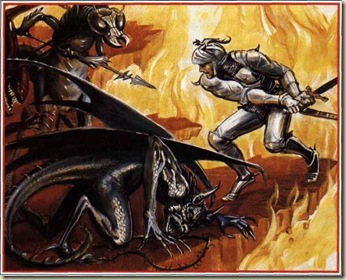
Ultimately the inclusion of this image in the 1st edition handbook seems odd. Because the module for this adventure came out much later than the 1st edition players handbook. In fact it came out for second edition and not first. The module is clearly intended for higher level characters as they are expected to fight on the planes of hell itself.
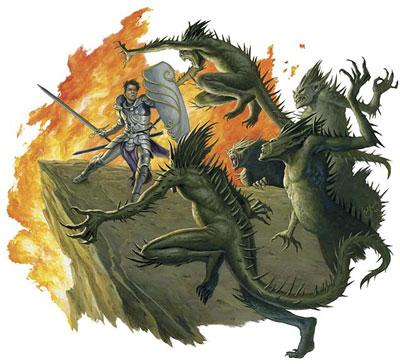
Since that original image was published in the 1st edition PHB there have been many more color versions of the same subject matter. The module was written by Monte Cook and came out in 1998.
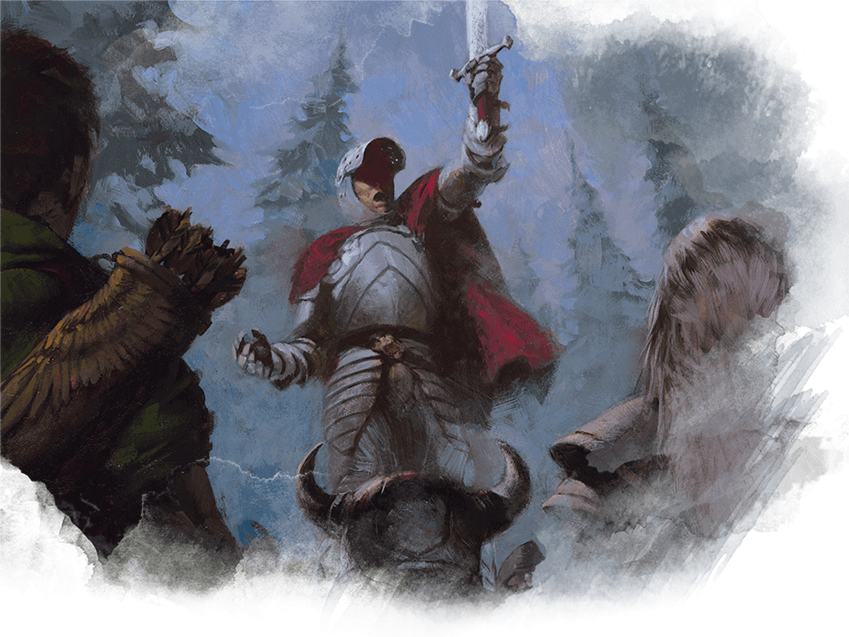
Paladins in Dungeons and Dragons Are Powerful
Ultimately, regardless of edition, the Paladin is a powerful character class. They were a much sought after choice in the early editions but were often difficult to qualify for. In the later editions they are played by virtually anyone as qualifications are no longer so exclusive. The holy warrior concept makes them appealing to those who wish to play a heroic character with special abilities and a sense of right and wrong.
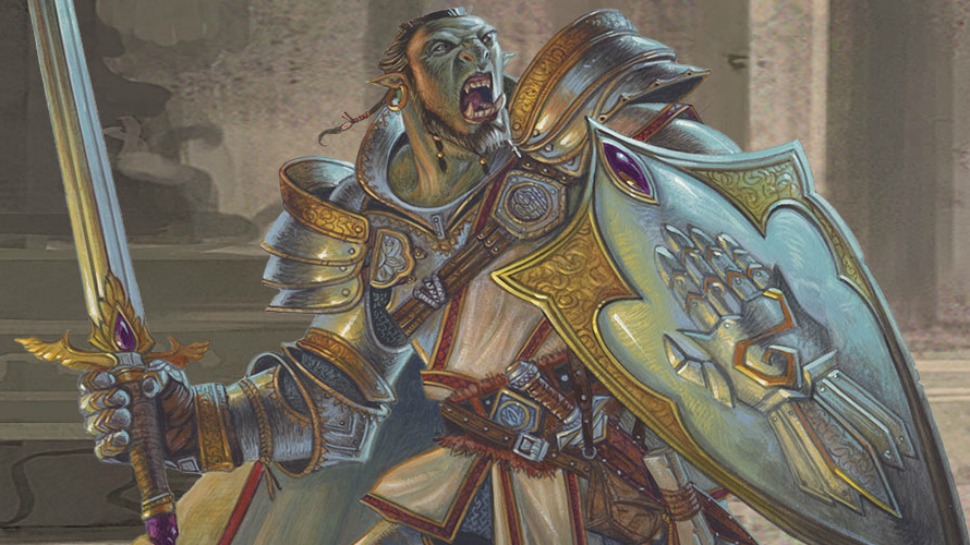


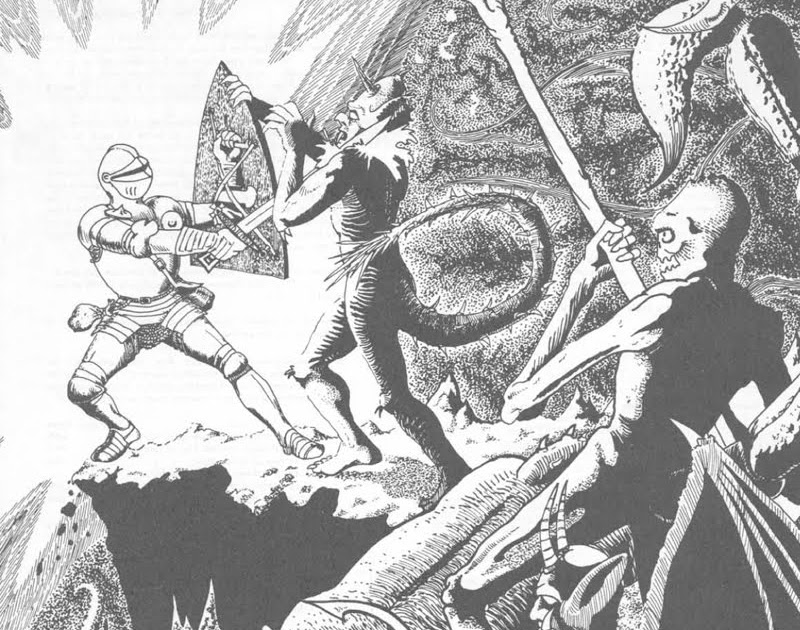
You may recall, though, that anti-Paladins and other Paladins of alternate alignments did appear as an option in issues of Dragon Magazine. I think they were written for 1st Edition, but it might have been 2nd. The anti-Paladin was CE, while the other Paladins were written up in a second article and covered the seven alignments other than LG and CE. To me, the idea of a CE Paladin was like a square circle, so these things never got any use in my games. It does show, however, that interest in such things pre-dated 5e by quite a long time.
I actually home brewed an anti-paladin to use as an NPC villain in my early games. Several DMs that I knew did so. That may or may not have been before the Dragon article. I subscribed to Dragon for only one year so I probably did not have the edition where it came out. I am not quite as much a fan of the 5th edition variant which allows virtually any alignment to become a normal paladin. To me that kind of ruins what a paladin represented in 1st edition and 2nd edition.
Anti-palafin was definitely first edition. It appeared in the first Best of Dragon. Loved it.
While the anti-paladin rears their treacherous head as early as AD&D (1st ed), in early Dragon Magazine as mentioned above, my first recollection of seeing a holy warrior of a non-good deity defined as a paladin was Weis & Hickman’s Rose of the Prophet series in 88-89. There was an article on Dragon 106 that tried to present “paladins” for the other 7 alignments, but Rose of the Prophet was the first coherent vision of a devoted follower of a, well, evil deity with specific powers, a code of honor, etc deriving from that deity’s worship.
When later editions of D&D officially defined paladins as holy warriors devoted to a specific god but no longer limited to Lawful Good (or even just good), my mind went, “Oh, they’re doing it that way, then.”
5th Edition has tried to simplify the bewildering plethora of classes from previous editions by consolidating related concepts as paths under one class. The Oath of Nature paladin is the 4th edition warden; the Oath of Vengeance derives from the Avenger (which, in its way, derives from the assassin class, and thus brings the historical assasiyuun back to their faith-based roots…); the Oath of Conquest is basically the blackguard- it still feels too lawful to be an anti-paladin as originally presented.
It comes down to this: the original paladin, as seen in the 1st ed PHB, was derived from the “holy knights of Christendom” as seen in L’Morte d’ Arthur, the Song of Roland, etc. With movement away from specific or real-world religions, the class has changed to include other concepts and expressions of faith. If you find this dilutes the flavor of the class for you, choose the oath of virtue, strap on your heavy armor, and declare yourself to your gaming table as a “classic paladin”. We’ll know what you mean.
Just don’t spend too much time picking on the rogue.
Interesting. I will have to look for the rose of the prophet. I do not remember seeing that before. The anti-paladin is kind of a natural. In fact…I am surprised Gygax did not include one at the very beginning. If there can be a holy warrior isn’t it logical for there to be a reverse?
As for rogues I probably will do an article on them at some point. They have evolved so much from the earliest versions of the game.